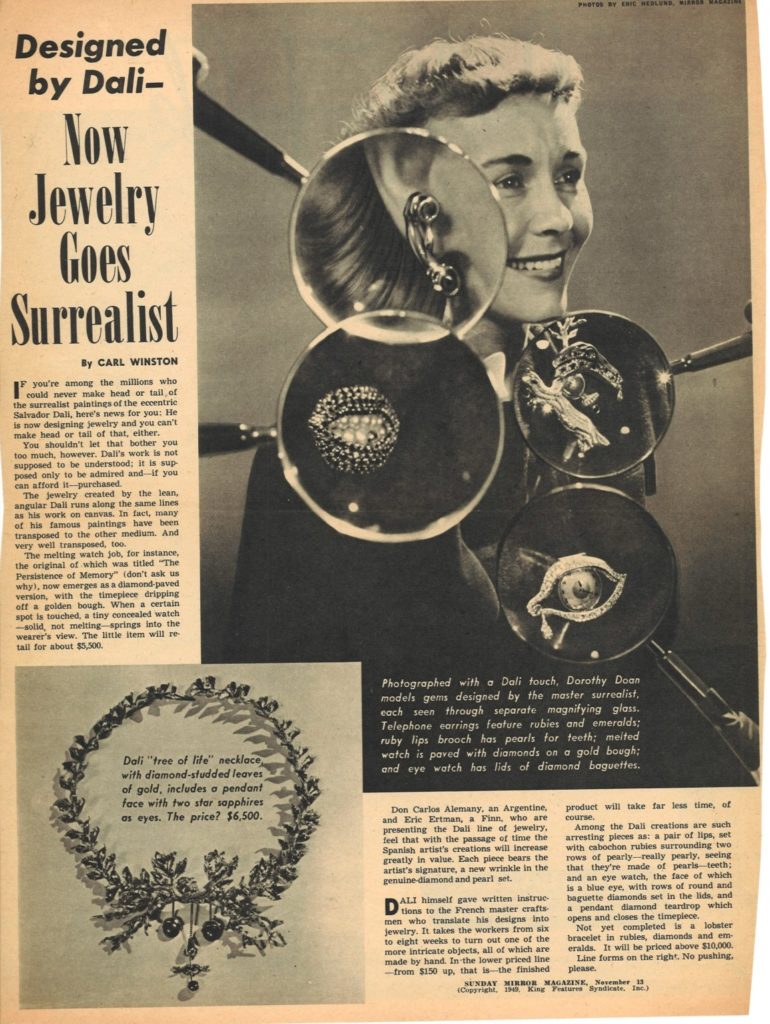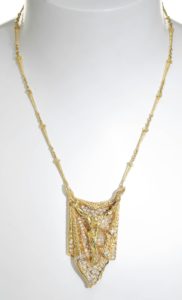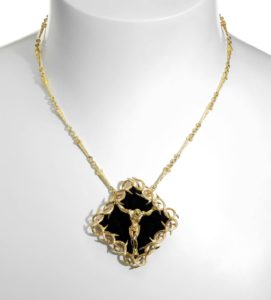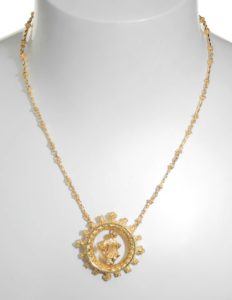Iconic Dalí-designed jewelry, deliciously non-traditional wearable art pieces, will be auctioned at Setdart on February 10th.

Lost in the melting clocks and twisted figures of Salvador Dalí’s warped reality, one must remember not to take the artist’s fantastic work at face value. Like his paintings and sculptures, Dalí’s jewelry is undoubtedly a reflection of its eccentric and ambitious creator, but the artist himself once warned viewers not to consider them a mere whim. “Illusory! Dalinian jewels are totally serious. I am glad that people smile at the earrings on the phone. A smile is something nice. But those earrings, like all my jewels, are serious. They represent the ear, a symbol of harmony and unity. connote the speed of modern media, the hope and danger of an instant change of thought. ”
Dalí, who is no stranger to experimentation with form, began designing jewelry in 1941, applying his idiosyncratic, symbolic approach to traditional objects and art to wear. The Catalan artist was a leading figure in the surrealist movement, however his work had been expelled from the shows of the genre in the late 1940s. Dalí began to see himself as a multidisciplinary artist, much like the Italian Renaissance masters he admired.
“Paladin of a new Renaissance, I too refuse to be locked up. My art encompasses physics, mathematics, architecture, nuclear science, psycho-nuclear, mystical-nuclear, and jewelry, not just painting” Dalí wrote in the introduction to a catalog of his jewels from 1959. No matter the medium, Dalí continued to reinvent universally celebrated themes, such as the heart, the cross, Christ, the crown, the Virgin, and the female form, throughout his career.
The idea of metamorphism and cosmology in both nature and religion are also essentially Dalí themes, often buried in the deeper meanings of his work. “Anthropomorphic themes appear and reappear in my jewelry. I see the human form in trees, leaves, animals; I see animal and plant characteristics in humans, ”said the artist. “My art, in paint, diamonds, rubies, pearls, emeralds, gold, chrysolite, shows how metamorphosis occurs; human beings create and change. When they sleep, they transform completely: into flowers, plants, trees. The new metamorphosis takes place in heaven. The body is whole again and reaches perfection. ”
Dalí made around 40 jewels between 1941 and 1970. The artist was very involved in all the steps of the production of his designs, but it was the Argentine goldsmith and silversmith Carlos Alemany who brought to life the jewel-encrusted visions of Dalí. At his New York studio, based at the St. Regis, Alemany would help create mind-blowing jewels, many of which were unique. Dalí selected the stones based on color and their symbolic associations, but both he and Alemany agreed that the design and construction of each piece were priorities. His painstaking craftsmanship and unique imagination is what makes Dalí’s jewelry so great.
In 1949, Philadelphia banker and philanthropist Cummins Catherwood and his wife Ellen Gowen, both patrons and later friends of Dalí, purchased 22 pieces of jewelry, directly from the artist. In May 2017, Sotheby’s sold the legendary Eye of Time brooch from this family’s collection. It represented one of four known Eye of Time examples, which also includes one sold by Sotheby’s in May 2014 for a staggering $ 1,055,000.






